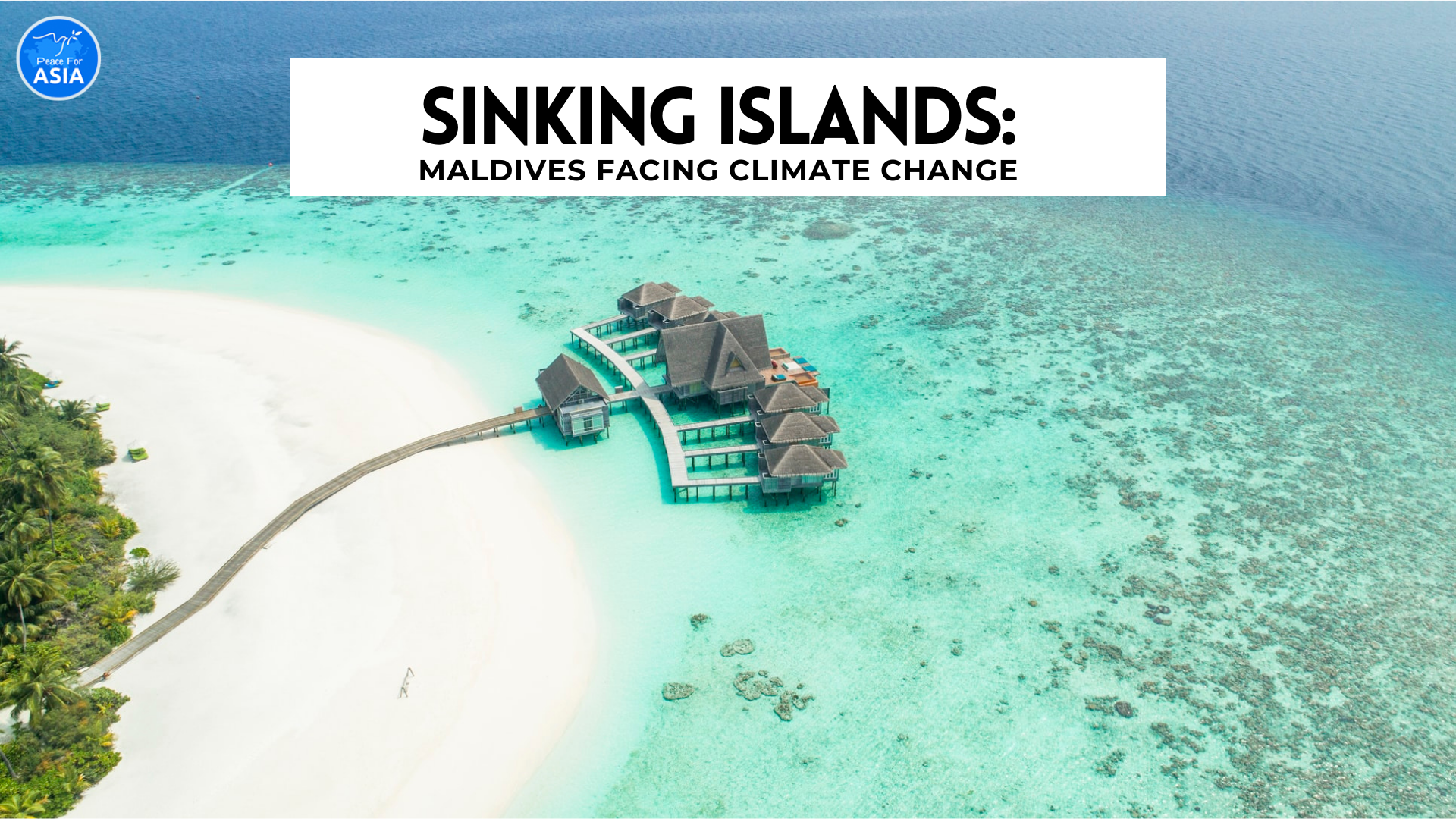A Global Problem Through a Local Dimension
“…there must be a way out. Neither the Maldives nor any small island nation wants to drown. That is for sure. Neither do we want our lands eroded nor our economies destroyed, nor do we want to become environmental refugees either. We want to stand up and fight.” President Maumoon Abdul Gayyoom, Small States Conference on Sea Level Rise, Male, 1989
What makes Maldives a case study?
The issue of climate change is a very broad field which implies a series of negative consequences worldwide, but it is interesting (in a miserable way) to see how a small reality as the one of island states is keeping up with these global challenges. As you probably know, Maldives is a country of 1190 small tropical islands living on the front line of climate change. It also is the flattest country on earth because of the average of 1.8 m elevation above sea level, hence morphologically unstable due to this very low elevation. Furthermore, it is the sixth smallest sovereign state in terms of land area. It is characterised by a tropical monsoon climate (MEEW, 2007) where daily
temperature varies between 31°C and 23°C.
Local drawbacks of this global problem are related to natural repercussion such as sea level rise, precipitations, temperature and extreme events, but also beach erosion, lack of freshwater resources (drying trends that affect the access to essential resources), pollution from man-made sources (for instance plastic pollution). All of these aspects worsen side by side with global change, and even more with human pressure and human activity (NAPA Maldives, 2006), because these vulnerabilities are particularly human-produced.
What should we take into account?
In order to understand the position of Maldives in this environmental change, we should examine the notion of island habitability: the ability of an island state to ensure life support system for his habitants (Campbell, 2018). The disaster risk profile of this nation is very high, and therefore needs priority adaptation strategies through adaptation projects, developed in the National Adaptation Programme of Action (NAPA) in order to achieve sustainable development outcomes and seek for a disaster risk reduction.
Maldives, together with other least developed countries (LDCs) as small island states, are much more vulnerable and is likely to witness serious impacts on their country compared to the developed countries, and climate change together with environmental degradation is becoming a real existential threat to those populations.
Concerning the social and political aspects
The climate gentrification that is happening is highly related to the concept of climate justice: the richer 10% of global population is responsible for nearly half of CO2 emissions, while the poorest 10% is responsible for 10% of CO2 emissions (Foer, 2019). However, those who are the least responsible for climate change are those who suffer more the consequences of it.
This was an example of how climate injustices are strictly tied to socio-economic aspects, more than immediate borders of the city (Turhan, Ethemcam & Armiero, 2019) and can divide the world in the dichotomy between countries that are at the core of the system and periphery-country, increasing even more global inequalities.
However, the importance of the Maldivian case concerns the fact that territorial loss implies the disappearance of a state: according to alarmists’ point of view, this could happen within a few decades. Faced with rising of sea level, the Maldives seek a new homeland. This could happen by absorption to another state, and it take for granted a population displacement without taking into account the right-to-the-world and mobility justice.
What now?
The difficulty from the legal point of view is that these are predictions, and it is hard to identify the boundary between environmental factors and climate change. There are a lot of uncertainties about the future impacts of the environment on migration, particularly in the case in which it is exacerbated by climate change since there is not a consensus regarding the scale of migration resulting from it (Martin, 2010).
The risk implied by these increasing human-induced disasters is the sudden growth of aliens, individuals who do not have the nationality of the state in whose territory they are (IOM, 2019). A mass flow of foreigners stateless will need a new place to be, since the patterns of human movements (that on a daily basis are already subjects to existential trade-offs) are changed by this threat multiplier and environmental stress.
To conclude, the Maldivian society is unique in the world, and for this reason it must be preserved, but if we do not act in time, this entire community may have to completely relocate as last resort.
REFERENCES AND FURTHER READINGS
Campbell, John. Migration and climate change in the Pacific, Handbook of Migration and Globalisation. Edited by Anna Triandafyllidou, Canada Excellence Chair in Migration and Integration, Ryerson University, Toronto, Canada, 2018, pp. 379-394.
Foer, Jonathan Safran. Possiamo salvare il mondo prima di cena. Edited by Ugo Guanda, 2019.
Intergovernmental Panel on Climate Change (IPCC): The Scientific Basis. Contribution of Working Group I to the Third Assessment Report of the Intergovernmental Panel on Climate Change. Cambridge, United Kingdom and New York, USA, Cambridge University Press, 2001.
Martin, Susan. “Climate Change, Migration, and Governance.” Global Governance: A Review of Multilateralism and International Organization, vol. 16, no. 3, 2010, pp. 397–414.
National Adaptation Programme of Action (NAPA), Republic of Maldives. Published by Ministry of Environment, Energy and Water, 2007.
Plewa, Piotr (PhD). Migration in Maldives, a country profile. International Organization for Migration (IOM), editorial team Ms Ihma Shareef, Ms Shahida Abdul Rahman and Mr Tommaso Casat, 2018.
Thornton, Fanny. Climate change refugees, in A. Triandafyllidou (ed.) Handbook of Migration and Globalisation, Edward Elgar Publishing, Cheltenham, 2018, pp. 379-410.
Turhan, Ethemcam & Marco Armiero. Of (not) being neighbours: cities, citizens and climate change in an age of migrations, Mobilities, vol. 14(3), 2019, pp. 363-374.

